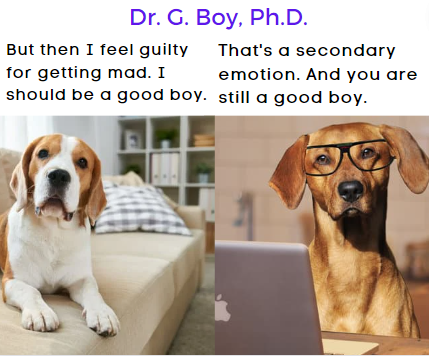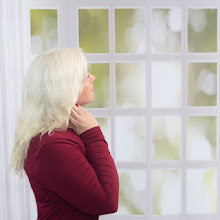We treat emotions like food. There are the good ones like joy and happiness. The "lean protein" of the nutrition world. Then, there are the "bad" ones like anger and distrust, the simple carbohydrates of the food world.
Emotions are often considered bad or good. We are usually okay with the "good" emotions like joy or anticipation. But we try and avoid the "bad" ones like anger and sadness. But why? Isn't there a reason we have an array of emotions, rather than just a couple?
Are we just supposed to ignore the bad and only remember the good?The "good" emotions are the ones that make us happier and feel better: joy, acceptance, awe, calm, confident, love, surprise, anticipation, trust etc.
The "bad" emotions are the ones that make us less happy: sadness, disgust, fear, anger, shy, hate, stunned, mistrust, etc.
An emotion is like a lighthouse, a street sign, an e-mail. It is a message meant for us to understand and interpret. Because the emotion tells us how we truly feel.
Emotions exist to tell us something about our situation orBesides having a large array of emotions to decipher, there are two different levels: primary and secondary.
Primary emotions are what you first feel when something happens to you. You don't think, it just comes to you. They are innate, human, and shared across cultures. There is no set list of all of the emotions. For example, according to psychologist Paul Ekman, there are six primary emotions They are anger, disgust, sadness, fear, surprise, and happiness. Eckman later expanded to list to include pride, shame, embarrassment, and excitement.
Let's take an example. You may feel happiness when winning an award at work. Later, you may start to feel relief or pride. You may feel anger if someone hurts your feelings. Later, you might feel embarrassed or frustrated that you let the hurtful words bother you.
So, what's the difference and why does it matter?
 Primary emotions are instinctive, come from deep parts of the brain and can guide us. This is how we really feel deep down. This is our authentic self.
Primary emotions are instinctive, come from deep parts of the brain and can guide us. This is how we really feel deep down. This is our authentic self.
Secondary emotions are learned and become part of our habits. As we grow up, we are taught how to
behave by those around us verbally and by actions. The issue is that we don't all learn the same messages. What is ok in one family or culture is not ok in another.
Let me illustrate my point. One example that comes to mind has to do with what little boys (who then become men) learn is acceptable. Let's say a little boy named Frank is born with an amazing talent for painting. Is that a gift or a curse? Well, it depends on the individual family. A blue-collar working-class family that expects boys to become soldiers or construction workers may frown on this behavior. Fast forward 18 years and it becomes time Frank, now a man, to go to work. Does he go into an approved line of traditional masculine work to please his family? Or does he risk losing his family or his family's respect by going to art school.
In this scenario the boy decides to pursue his dreams and goes to art school. But even though people like his paintings he experiences emotions when he gets complements. His first emotion is surprise. But then his secondary emotions arise- guilt, embarrassment. As a child he was ostracized for wasting time painting. Those are learned habits. And these learned secondary emotions can get in the way of his success and enjoyment.
Secondary emotions are protective, defensive and avoidant. They lead us to distance ourselves from our goals, values, and people. Secondary emotions can numb other emotions.
The issue becomes recognizing our primary vs. secondary emotions. They can tell us: Who we like or do not like, what is triggering or upsetting, what is truly going on, how we really feel. If we do not learn to recognize our primary emotions, then we may come up with unhealthy ways to cope with our complicated secondary emotions.
In our example above, if Frank can coincide his reaction of surprise with the guilt and embarrassment he felt when he showed his work to others, he has the chance to be successful in his chosen profession or at least just to enjoy his gift without feeling guilty about it.
I love this quote from Dr. Lisa Firestone's article How Emotions Guide our Lives:
When we live in harmony with our emotions, we become more in touch with who we are. We gaininsight into the real core emotions that are causing our reactions, and we can be the one at the wheel, choosing our actions. Feeling is an adaptive mechanism to give us critical information. By focusing on emotion with compassion and curiosity, we can discover who we are and what we want.









Comments
Post a Comment